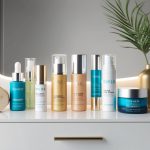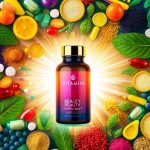How to Get Rid of Dark Spots on Face Fast: Dermatologist-Approved Skincare Solutions
Topical Ingredients for Fading Dark Spots
Several active ingredients can effectively target stubborn dark spots and support a brighter, more even skin tone. Each group of ingredients—antioxidants, retinoids, and pigment-correcting agents—works in a unique way and is often recommended by dermatologists.
Vitamin C and Antioxidants
Vitamin C is a well-studied antioxidant recognized for its ability to inhibit melanin production and prevent new dark spots from forming. Two common forms in skincare are l-ascorbic acid and ascorbyl glucoside, both valued for their skin-brightening properties.
Topical vitamin C serum, when used daily, protects against UV-induced pigment and reduces the look of existing discoloration. The benefits of vitamin C are often enhanced when combined with other antioxidants like vitamin E and ferulic acid.
This combination offers protection against environmental stressors, making it a popular choice in anti-aging and dark spot corrector routines. Many dermatologists favor vitamin C as one of the first ingredients to try for hyperpigmentation due to its efficacy and lower irritation potential compared to some other agents.
Specific products and serums are reviewed and recommended in several dermatologist-guided lists.
Retinoids and Vitamin A Derivatives
Retinoids, including retinol and prescription-strength retinoic acids, are derivatives of vitamin A that stimulate cell turnover. By speeding up the removal of pigmented cells and encouraging new skin growth, these ingredients reduce the appearance of dark spots over time.
They are particularly useful for sun spots, post-inflammatory hyperpigmentation, and age-related discoloration. Retinoids remain a cornerstone of dermatologist-approved treatments for dark spots due to their proven ability to boost collagen production and renew the complexion.
However, users should start slowly, as irritation and dryness can occur, especially with higher strengths. Nighttime use and consistent sunscreen in the morning are strongly advised to minimize sensitivity and achieve optimal results.
Both over-the-counter and prescription options provide results, though strengths vary.
Niacinamide and Peptides
Niacinamide, a form of vitamin B3, is widely recognized for its ability to fade dark spots by limiting the transfer of melanin to skin cells. In clinical studies, niacinamide also helps improve skin barrier function, which can support tolerance to stronger actives.
Peptides, often included alongside niacinamide in modern formulations, are short chains of amino acids that help reinforce skin structure and support repair. When used together, niacinamide and peptides create a well-rounded approach to treating uneven skin tone and texture.
Niacinamide is popular for those with sensitive skin, as it is less irritating than acids or retinoids. Many current dark spot correctors, such as those highlighted in expert reviews and Amazon listings, combine these ingredients to promote brighter, more resilient skin without significant side effects.
Exfoliation and Skin Renewal Strategies
Exfoliation is a targeted approach to fade dark spots and even skin tone. By removing dead skin cells and stimulating renewal, these methods can help deliver visible improvements.
Alpha Hydroxy Acids (AHAs)
Alpha hydroxy acids (AHAs) are water-soluble exfoliants that work by breaking down the bonds holding dead skin cells on the surface. Glycolic acid and lactic acid are two of the most popular AHAs found in skincare products.
Glycolic acid, derived from sugar cane, has a small molecular size that allows it to penetrate deeply and promote cell turnover. Lactic acid, known for gentler exfoliation, also provides hydration benefits along with brightening effects.
These acids are especially effective for those targeting discoloration caused by sun damage or melasma. Consistent use can help lighten dark spots and improve overall texture.
AHAs are often included in serums, toners, and masks. For best results, start with lower concentrations—around 5-10% glycolic or lactic acid—before progressing to stronger products as tolerated by the skin.
Sun protection is crucial because AHAs may increase photosensitivity.
Beta Hydroxy Acids (BHAs)
Beta hydroxy acids (BHAs), especially salicylic acid, are oil-soluble and penetrate deep into pores. This makes them suitable for individuals with acne-prone or oily skin alongside hyperpigmentation.
Salicylic acid not only exfoliates the surface but also helps clear out sebum and reduce inflammation. By removing blockages and encouraging healthy turnover, BHAs can target post-inflammatory dark spots left by blemishes.
Products containing 0.5% to 2% salicylic acid are commonly available and widely used in cleansers, toners, and spot treatments. Unlike AHAs, BHAs possess soothing properties, making them less likely to irritate sensitive skin.
Regular use can provide a smoother, clearer complexion and support the reduction of visible dark marks.
Chemical Exfoliants for Fast Results
Chemical exfoliants offer customizable, rapid exfoliation for targeted pigment reduction. They are considered by experts as one of the most efficient options for stubborn dark spots.
Formulations combining AHAs, BHAs, or stronger agents like trichloroacetic acid are often used in professional peels and at-home treatments. According to dermatologists, products such as glycolic acid masks or custom chemical peels accelerate the shedding of pigmented cells and stimulate faster renewal.
These treatments can be adjusted in strength to match different skin needs and tolerances. Safety and aftercare are important, as stronger concentrations can lead to irritation if not used properly.
Consulting a professional for customized chemical peel recommendations can be beneficial for those seeking accelerated fading of dark spots.
Targeted Dark Spot Correctors
Effective removal of dark spots depends on selecting products with proven active ingredients. Dermatologist-recommended solutions target pigmentation with precision.
These solutions focus on serums, brightening ingredients, and specialized night creams that address visible spots safely and efficiently.
Best Dark Spot Correcting Serums
Dark spot correcting serums are designed to deliver potent ingredients directly where they are needed most. Top-rated options like the mela B3 serum, SkinCeuticals Discoloration Defense, and formulas featuring niacinamide or vitamin C can help reduce hyperpigmentation when used consistently.
These serums often use blends of actives for synergistic results. Several serums incorporate tranexamic acid, kojic acid, and azelaic acid, which work to inhibit the enzymes responsible for melanin production.
A dark spot correcting serum with these components, used twice daily, may provide visible improvement in skin tone and luminosity within weeks. Dermatologists often recommend choosing lightweight yet powerful options that absorb quickly and do not irritate even sensitive skin types.
Users seeking dermatologist-approved solutions can consider options tested over 12 weeks in comparative trials, such as those listed in reviews of the best dark spot correctors and serums recommended by experts.



